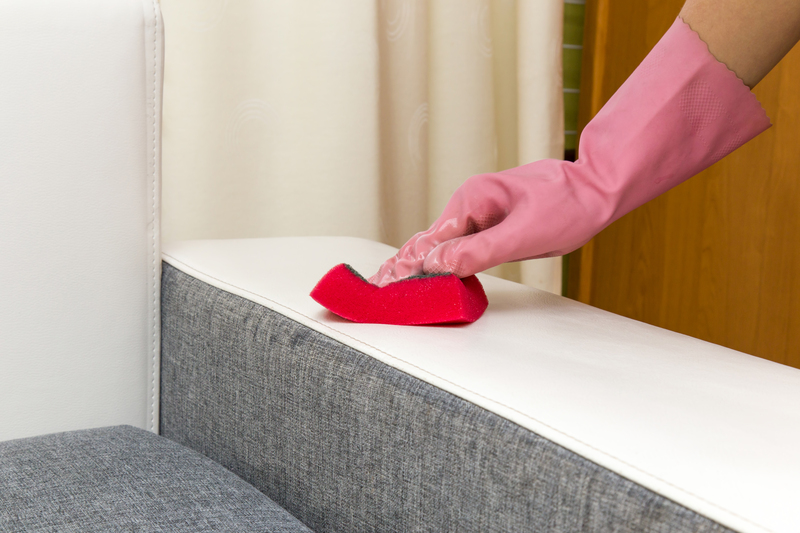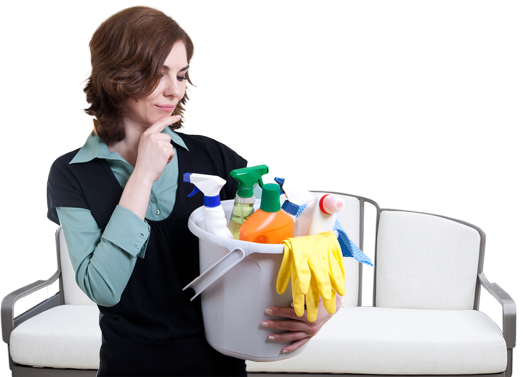Breathing easy: Improving workplace and home air quality
Posted on 12/09/2025
Breathing Easy: Improving Workplace and Home Air Quality
In today’s fast-paced world, the quality of the air we breathe--both in our homes and in our workplaces--has never been more important. Indoor air quality affects our health, comfort, productivity, and overall well-being. With more people working remotely or spending time indoors, understanding how to improve the air we breathe has become a vital component of healthy living. This comprehensive guide will explore practical steps and advanced strategies for improving air quality at home and in the office, so you can truly start breathing easy.

Why is Indoor Air Quality Important?
Indoor air can be contaminated by a range of pollutants, many of which are less obvious than visible dust or odors. These can cause or aggravate allergies, respiratory problems, or even more serious health conditions. According to the World Health Organization (WHO), poor indoor air quality is linked to millions of premature deaths worldwide. In workplaces, poor air can lead to reduced concentration, increased sick days, and lower overall productivity. At home, subpar air can also impact sleep quality and the comfort of your loved ones.
- Invisible threats: Many harmful particles, such as volatile organic compounds (VOCs), mold spores, and bacteria, are invisible and can accumulate indoors.
- Health consequences: Poor air can cause headaches, fatigue, irritations, aggravated asthma, and long-term diseases.
- Wellness and productivity: Clean air improves attention, energy levels, and overall well-being.
Understanding Common Indoor Air Pollutants
To effectively tackle the challenge of improving air quality in the home or workplace, it's essential to know what pollutants to target. Here are the main culprits:
- Particulate matter (PM2.5 and PM10): Tiny particles from dust, smoke, and vehicle emissions that can penetrate deep into the lungs.
- VOCs: Gases emitted from paints, cleaning products, office equipment, and new furniture.
- Mold and mildew: Fungi that thrive in damp environments, releasing spores into the air.
- Allergens: Pollen, pet dander, cockroach debris, and dust mites.
- Carbon monoxide: A colorless, odorless gas from faulty heating devices or car exhausts.
- Radon: A naturally occurring gas that can accumulate indoors and is linked to lung cancer.
Breathing Easy at Home: Steps to Improve Your Home Air Quality
Your home should be a sanctuary. With a targeted approach, you can create an indoor environment that promotes good health and high-quality air.
1. Control Moisture to Prevent Mold
Mold spores can trigger allergic reactions and respiratory issues. Reducing excess moisture helps prevent mold growth. Here's how you can manage humidity:
- Use exhaust fans in bathrooms and kitchens.
- Fix leaky pipes or roofs immediately.
- Consider a dehumidifier if humidity consistently exceeds 50%.
- Regularly clean and maintain air conditioning units.
2. Ventilate Your Living Spaces
Good ventilation is one of the most effective ways to dilute indoor pollutants. Open windows daily to allow fresh air circulation, even in winter. If outdoor air quality is low, use trickle vents or mechanical ventilation systems with recommended filters.
- Cross-ventilation: Open multiple windows in different rooms to encourage airflow.
- Air purifiers: Invest in a high-efficiency particulate air (HEPA) filter for rooms most used by your family.
3. Adopt an Air-Friendly Cleaning Routine
Many conventional cleaning products release harmful chemicals. Consider these tips for improving indoor air quality while cleaning:
- Choose natural, unscented, or eco-friendly detergents.
- Avoid aerosol sprays and air fresheners with synthetic chemicals.
- Vacuum frequently with a HEPA-filter vacuum to reduce dust and allergens.
- Damp-mop hard floors and wipe surfaces regularly.
4. Minimize Sources of Indoor Pollution
Identifying and minimizing pollution sources is crucial. Here's how:
- Have your home tested for radon and take remedial measures if necessary.
- Don't smoke indoors--ever.
- Avoid burning candles and incense excessively.
- Choose low-VOC paints, furniture, and building materials.
- Keep chimneys and exhaust fans clean and functional.
5. Consider Indoor Plants: Nature's Air Purifiers
Some indoor plants are known for their ability to filter toxins and add oxygen to your living space. Common favorites include:
- Spider plant (Chlorophytum comosum)
- Snake plant (Sansevieria trifasciata)
- Peace lily (Spathiphyllum)
- Aloe vera
- Bamboo palm
Note: If you have pets or allergies, check if a plant is suitable before bringing it home.
Elevating Workplace Air Quality for Productivity and Health
Workplace air quality is just as important as home air quality, especially given that many people spend upwards of 8 hours daily in office environments. Poor air can increase absenteeism, boost the risk of employee health issues, and even hurt a business's bottom line.
1. Upgrade Office Ventilation and Filtration
- Ensure existing HVAC systems are well-maintained and filters are replaced according to manufacturer guidelines.
- Install advanced air filtration units (HEPA or activated carbon filters) to target dust, odors, and chemical fumes.
- Maximize the flow of fresh air from outdoors wherever possible.
2. Monitor and Control Common Workplace Pollutants
Offices can harbor VOCs from office furniture, equipment, and cleaning supplies. Take action:
- Specify low-emission office furniture and building materials when furnishing or renovating.
- Store chemicals securely and ventilate areas where they are used.
- Use green cleaning products and encourage fragrance-free policies.
- Educate staff about the risks of scents and air freshening sprays.
3. Maintain Healthy Humidity Levels
- Ideal indoor humidity: Keep office humidity between 30% and 50% to deter mold and dust mites.
- Repair water leaks and check for condensation near windows or HVAC units.
4. Regular Cleaning and Hygiene Practices
- Implement frequent cleaning of workstations, carpets, and high-traffic areas.
- Encourage employees to keep desks clear of clutter, which can accumulate dust.
- Provide supplies such as disinfectant wipes and hand sanitizers.
5. Indoor Plants for Offices
Like at home, certain indoor plants can boost workplace air quality while enhancing the aesthetic appeal and reducing stress.
- Pothos (Epipremnum aureum)
- ZZ plant (Zamioculcas zamiifolia)
- Rubber plant (Ficus elastica)
- Snake plant
Advanced Technology for Enhanced Indoor Air Quality
As awareness grows, so does the market for air quality technology. Consider these innovations:
- Smart air quality monitors: Devices that continuously track pollutants, humidity, and carbon dioxide, and provide alerts for necessary action.
- UV-C air purification systems: Use ultraviolet light to neutralize bacteria, viruses, and mold spores in HVAC systems.
- Electrostatic precipitators: Remove fine particulates through an electrical charge--especially useful in large office environments.
- IoT integration: Allows syncing air quality data with your smartphone or building management systems for remote management.
Air Purifiers: How to Choose the Right One
Not all air purifiers are created equal. Consider the following when selecting the best model for your home or office:
- HEPA filter effectiveness: HEPA filters capture up to 99.97% of airborne particles as small as 0.3 microns.
- Room size: Choose a purifier rated for the square footage of your space.
- Noise level: Select a device with quiet operation for bedrooms or offices.
- Maintenance: Check costs and ease of replacing filters.
- Additional technologies: Look for added functionalities like carbon filters for odors or UV-C for germs.
Quick Tips for Daily Habits to Sustain Better Air Quality
- Take off shoes at the door to avoid carrying pollutants indoors.
- Do not idle your car in attached garages.
- Avoid synthetic fragrances in candles, air fresheners, and laundry products.
- Wash bedding and soft furnishings regularly to reduce dust mites and allergens.
- Let laundry dry outside if possible, or use a well-ventilated area.

Special Considerations: Vulnerable Groups and Seasonal Factors
Children, the elderly, and those with pre-existing respiratory conditions are particularly susceptible to indoor air pollution. Consider the following:
- Use an air purifier in nurseries or bedrooms of those with asthma.
- During allergy season, keep windows closed and use air conditioning with clean filters.
- Monitor local air quality indexes to adjust ventilation accordingly, especially during wildfires or high pollution events.
Allergy-proof your home: Encase mattresses and pillows in dust-mite-proof covers, minimize the use of heavy drapes, and avoid carpeting where feasible.
Breathing Easy: The Road Ahead
The journey to improving air quality at home and in the workplace doesn't need to be complicated. With modern solutions and conscientious daily habits, everyone can benefit from cleaner, healthier air.
- Stay informed about the latest advancements in air quality technology.
- Take regular action--small steps like opening a window or changing a filter can make a significant difference.
- Make air quality a shared responsibility: involve family members and coworkers in maintaining a clean environment.
Remember: Breathing easy isn't just a comfort - it's a crucial part of living well. By paying attention to the air in your home and workplace, you're investing in your health, productivity, and happiness. Start today for a fresher, safer, and more comfortable indoor experience.





